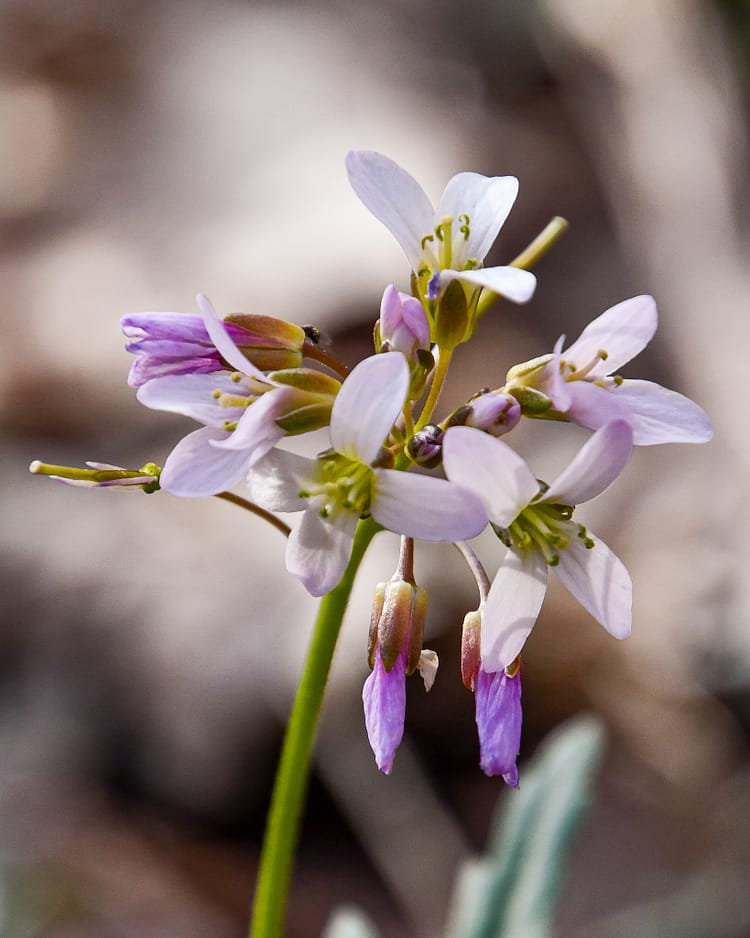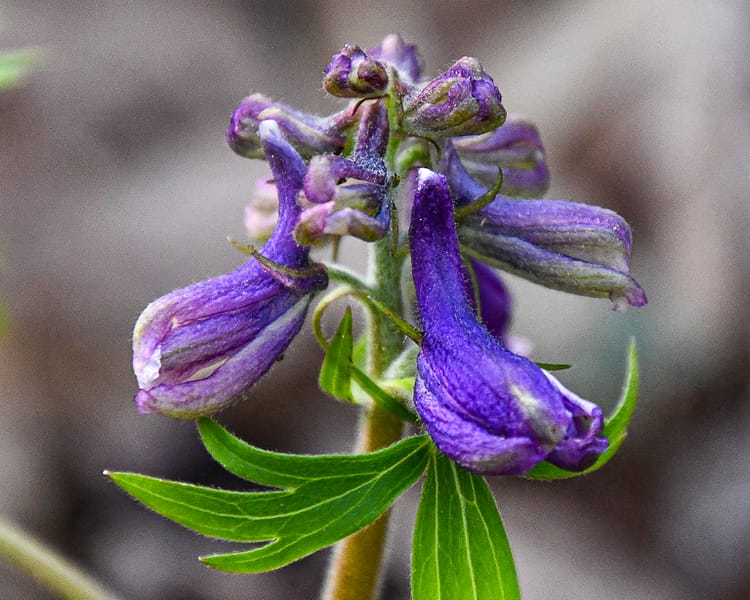We revisited the Appalachian Ranger district to camp and hike the first weekend in April in an area where there were no trail closures. It was quite cold, and the presence of early April wildflowers was highly dependent on the orientation of slopes and elevation. Some south-facing crags displayed a variety of early spring wildflowers; others were still covered in leaf litter from the fall with little sign of spring. The long range vistas provided the perfect backdrop!
As COVID-19 spreads across the Southern Appalachians, more and more trails are closing to prevent spread. Closures are often at odds with “Stay at Home” orders that allow outdoor recreational activities. Restricting access to a variety of trails can result in people congregating in the few areas that remain open.
Appalachian Ranger District near the Black Mountains
Bernie had gone out to the trail earlier for an endurance “ruck”, which involves carrying an 85 pound backpack full of sand. Not for me, thanks! I arrived late afternoon, and began searching for wildflowers. We camped in a rich cove where there were plenty of herbaceous plants, and a few flowers as well. This cut leaf toothwort caught my eye due to the varied shades of pink on the petals.

Larkspur has very distinctive, deeply-lobed leaves, reminding me of a fleur-de-lis. It is one of my favorite April wildflowers. The flowers have a spurred sepal, and are typically a deep purplish-blue. Larkspur can also be a very light lilac color as well. Here are 2 images, one of the raceme before the blooms open, and another with the petals and sepals open.


This blog is about my unending love for wilderness and the endless beauty found in nature. It is also about the deep connection that is felt and shared by all of us who feel most at home when we gaze upon a landscape, flower, tree or vista. Saturday morning, I took this shot from the iKamper window, watching as the sunrise painted the sky with vivid hues. What is an iKamper? Check out this post: https://hikescape.org/shelton-laurel-backcountry-jerry-miller-trail/

We set out on the Big Butt Trail, from the Cane River Gap. I have blogged about this trail at least twice, and it is delightful until about late May when the grass grows over the trail.

Long range views from Big Butt and Little Butt
As we wound upwards, we counted the switchbacks once again- and came up with 23 this time. It was a cool morning, but the sky was a deep brilliant blue and switchbacks will always warm you up! We took the side trail to Big Butt (5,920 ft), which has an NGS survey marker https://www.geocaching.com/mark/ and long range views into the valley of Barnardsville.

After leaving Big Butt, we continued on the needle ridge, with steep dropoffs on either side and stunted, gnarled trees and laurels. This view is from a small rock outcrop a few hundred yards from the Little Butt overlook.

Here is a view of the trail along the needle ridge. There isn’t much there except the thick mountain laurel that keeps you from dropping off the face of the ridge, but it is uniquely beautiful.

It had warmed considerably, and spring beauty had opened since we began our hike that morning.

These spring beauty were so colorful, with their deep pink lines radiating outward on the pure white petals.

We hiked the next day at a much lower elevation, where the wildflowers were more varied and plentiful. Stay tuned for the next trail update, and enjoy your journeys as well.


